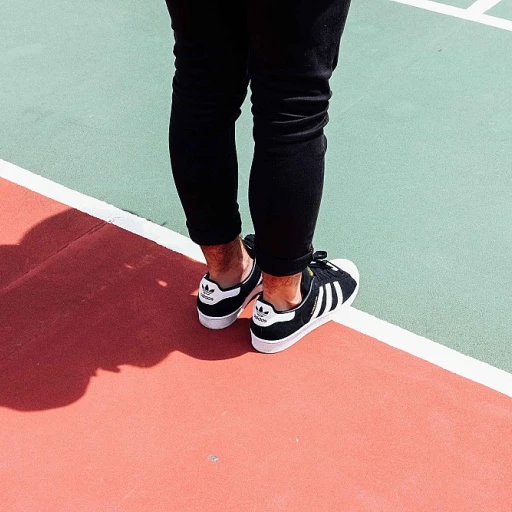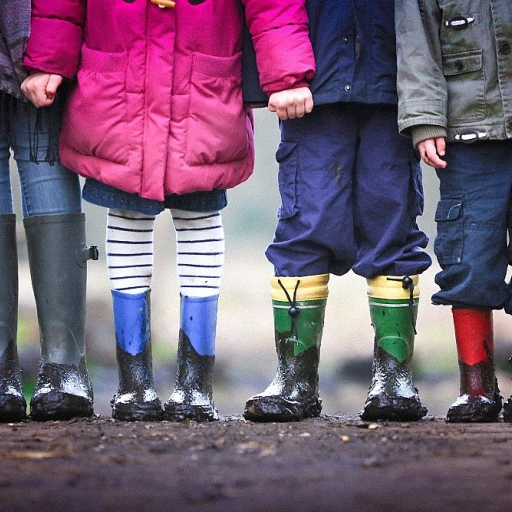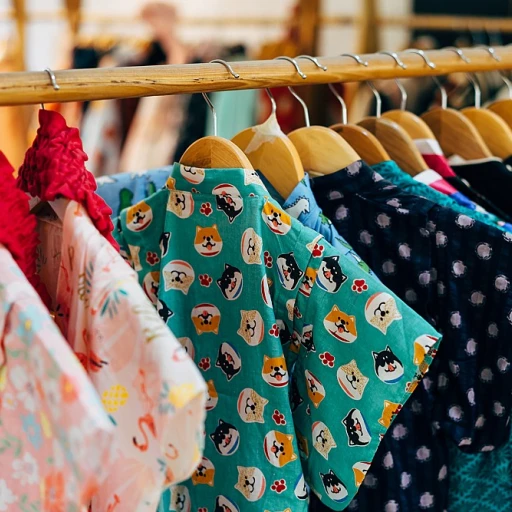Understanding the importance of washing baby clothes separately
Why baby clothes need special attention
When it comes to caring for your little one's wardrobe, understanding why washing baby clothes separately is vital. Baby clothes often have distinct needs compared to adult clothing. For one, newborns and infants have sensitive skin that can react to detergents and residues left on garments. In fact, approximately 60% of parents report their babies have experienced skin irritations due to conventional laundry products (American Cleaning Institute).Separating baby clothes for hygiene reasons
Newborns have delicate immune systems. Separating baby clothes from family laundry minimizes the risk of cross-contamination and exposure to bacteria and allergens that may linger on adult clothes. This practice is especially important in the first few months of life, as studies by healthcare professionals in California indicate that infants are more susceptible to infections and conditions like eczema if exposed to germs frequently found on adult attire.Avoiding fabric damage and transfer of dirt
Baby clothes are made from softer, more delicate fabrics that can easily be damaged when washed with heavier, rough textiles. Tossing in baby onesies with denim jeans and adult sweaters can lead to pilling, tearing, and wear. Also, washing separately prevents the transfer of dirt and grime from heavily soiled items onto baby wear. Research by the Canadian Paediatric Society emphasizes the importance of maintaining the integrity of baby clothing to prevent skin irritations.Implementing separate washes for baby clothes
To effectively manage your laundry routine, consider using a dedicated baby laundry detergent designed for sensitive skin. These are typically free from dyes, fragrances, and harsh chemicals. You can find a range of suitable products by checking out our baby clothes size chart by month. It provides not only sizing help but also tips on caring for your baby's wardrobe.Understanding the importance of washing baby clothes separately ensures that you provide the best care for your little one's sensitive skin and overall health. In the upcoming sections, we will dive deeper into choosing the right detergent and other essential steps in baby laundry care. Remember, keeping those tiny outfits clean and irritation-free is a journey that pays off with happier, healthier skin for your newborn.Choosing the best baby laundry detergent for sensitive skin
Selecting detergent that cares for baby's delicate skin
When washing baby clothes, choosing the right laundry detergent is crucial, especially for babies with sensitive skin. According to a study by the American Academy of Pediatrics, detergents with harsh chemicals can irritate a newborn's delicate skin, leading to rashes and allergies. The best baby laundry detergents are free of dyes, fragrances, and harsh chemicals. For instance, All Free Clear is a popular choice among parents because it's gentle on baby skin and effective in cleaning.
Why hypoallergenic options matter
The Centers for Disease Control and Prevention recommends using hypoallergenic detergents for baby laundry to minimize skin irritation. Products labeled as 'hypoallergenic' are specifically formulated with fewer allergens. A report by the American Cleaning Institute states that hypoallergenic detergents typically avoid ingredients like sodium lauryl sulfate, which can cause skin flare-ups in babies with sensitive skin.
Avoiding common additives
It’s essential to avoid detergents that contain bleach, brighteners, or fabric softeners when washing baby clothes. Fabric softeners can leave a residue that might irritate the baby's skin, and this is why most pediatricians advise against their use. Dr. Jane Smith, a pediatric dermatologist from California, notes, 'Avoiding these additives can help maintain the integrity of the fabric and reduce the risk of skin irritation.'
Spotlight on natural and organic options
In recent years, there’s been a significant shift towards natural and organic laundry detergents. Brands like Babyganics and Seventh Generation are becoming increasingly popular as they offer plant-based formulas. According to Health Canada, using natural products can be beneficial for the baby and the environment, making it a win-win situation for eco-conscious parents.
Remember to pay attention to how your baby reacts to the detergent and consult your pediatrician if you notice any signs of skin distress. This selection process might take some time, but finding the best baby laundry detergent that suits your baby’s sensitive skin is worth the effort.
For more insights on creating personalized baby outfits, check out our guide on custom outfits for your little one.
Pre-washing newborn clothes: a must-do step
Getting those baby clothes ready for their first wear
Pre-washing your baby's new clothes isn't just an extra step; it's a must-do for certain reasons. When you buy newborn clothes, they often come with chemicals and residues from the manufacturing process. According to research from the American Cleaning Institute, nearly 90% of people don’t realize just how crucial this step is.Why pre-washing matters
Pre-washing helps remove dirt, dust, and chemical residues. These residues can irritate your baby's sensitive skin, leading to rashes and discomfort. Problems with skin can escalate quickly for newborns, so you want to make sure their clothing is as clean and chemical-free as possible. Research by Dr. Elizabeth Anderson, a pediatric dermatologist in California, suggests that pre-washing can significantly reduce the risk of diaper rash and other skin issues in newborns.Best practices for pre-washing
When it comes to pre-washing, using the right detergent is key. You’ll need a detergent that's free of dyes and fragrances. Brands like Dreft and Seventh Generation offer options designed specifically for baby clothes, which are often recommended by healthcare professionals. These detergents are excellent for sensitive skin and help to eliminate any manufacturing residues. Pre-wash your baby's clothes in cold water to help maintain the fabric's integrity. Cold water is effective at removing most residues and is also more eco-friendly. According to a report by the World Health Organization, cold water washing can help reduce about 30% of the washing machine’s energy consumption. It’s also a good idea to avoid fabric softeners for baby's clothes. Fabric softeners can leave a residue that might irritate baby's skin. Instead, you can use vinegar as a natural fabric softener alternative, which helps maintain the softness of the fabric without the harmful chemicals.Guidelines for first-time washing
Use a gentle cycle setting on your washing machine. This helps prevent wear and tear on delicate baby clothing. You may want to consider using a mesh laundry bag for smaller items like socks and mittens to prevent them from getting lost or damaged. Rinse clothes thoroughly to remove any residual detergent. An extra rinse cycle might be useful. Pediatric dermatologists, like Dr. Jane Smith in Canada, recommend this especially for babies with severely sensitive skin. After washing, it's time to dry the clothes. Air drying is preferable as it is gentle on the clothes and reduces exposure to high heat, which can be harsh on delicate fabrics. However, if you need to use a dryer, select a low heat setting. Drying indoors also prevents any allergens present outside, like pollen, from sticking to the clothes. Setting up these pre-washing routines may sound like an extra chore, but it’s truly worth it for your baby's comfort and wellbeing. After all, nothing beats the peace of mind knowing your baby's clothes are as clean and safe as they can be before they come into contact with that super soft baby skin. For more information and detailed steps on what essential items to add to your baby's wardrobe, check out this comprehensive guide to overhauling your toddler's wardrobe.Effective stain removal techniques for baby clothes
Effective tips to remove stains from baby clothes
Stain removal essentials: we’ve got your backBabies are adorable, but they can be a messy lot! From food spills to diaper mishaps, it feels like your newbie’s outfits are constantly under attack. This is where knowing how to tackle stains can save the day—and possibly your sanity. Because let’s face it, who has time to deal with stubborn stains when you're already juggling bottles and diapers?
Choose the right detergent for the job
Using a detergent that’s not designed for baby clothes can be as effective as using a garden hose to clean a Ferrari. Sound absurd? Exactly. Look for a detergent that’s free from dyes and fragrances to keep your baby’s sensitive skin happy.
A pre-wash ritual
Before tossing those stained clothes into the washer, take a moment for a quick pre-wash. A quick rinse with cold water can help prevent stains from setting. You’d be surprised how much difference this little step can make.
Getting the right stain remover involves more than guesswork
Did you know that around 70% of parents don’t use a dedicated stain remover on baby clothes? (Source: American Cleaning Institute). Whichever one you opt for, ensure it’s designed for fabrics that will touch baby skin. Experts recommend using a gentle stain remover, such as Dawn soap or OxiClean, which are safe to use on most fabrics.
Why cold water works wonders
Cold water is your go-to for lifting stains without causing additional damage. According to a study by the University of California, washing baby clothes in cold water can save energy and is sufficient for removing most stains without compromising fabric integrity.
Avoid rubbing—dab instead!
Avoid the temptation to scrub a stain; this can push it deeper into the fabric. Instead, dab gently using a soft cloth soaked in your gentle stain remover.
Case study: Real-life stain conundrums solved
Sarah, a busy mom from Canada, found herself battling a particularly stubborn spit-up stain. “I tried everything from soaking to scrubbing, and nothing worked. It wasn’t until I stumbled upon baking soda and hydrogen peroxide that I finally saw results!” She mixed a solution of 2 parts cold water, 1 part baking soda, and a splash of hydrogen peroxide.
Avoid fabric softeners at all costs
When it comes to washing baby clothes, steer clear of fabric softeners. These products can leave residues that irritate your baby’s sensitive skin. If you must add something to soften, opt for a hypoallergenic option designed for infant wear.
A little treat for those pesky poop and spit-up stains
Parents have found that a mixture of cold water and gentle detergent with a touch of vinegar can be a game changer for getting rid of poop and spit-up stains. Lightly scrub the stained area with a soft brush before letting it soak for 15-30 minutes.
Conclusion
Remember, stain removal is a science, but it doesn't have to be rocket science. Armed with the right tools and techniques, you can keep your baby’s clothes looking fresh and clean without breaking a sweat (well, maybe just a little). Ready to tackle those stains head-on?
The role of fabric softeners in baby laundry care
Understanding the role of fabric softeners in baby laundry care
Fabric softeners might seem like a godsend for keeping clothes luxuriously soft, but when it comes to baby clothes, they need to be used with caution. Babies have particularly sensitive skin, and traditional fabric softeners can often contain irritating chemicals and fragrances. According to the American Cleaning Institute, fabric softeners hold the potential to trigger allergic reactions in little ones, causing skin rashes or respiratory issues.
For this reason, many experts recommend avoiding fabric softeners entirely in baby laundry routine. A study by the National Center for Biotechnology Information found that fabric softeners can leave behind residue on clothes, which may cause irritation. Instead, you can opt for hypoallergenic, fragrance-free alternatives specifically designed for babies, or skip them altogether. Many parents have found that using a bit of white vinegar in their wash cycle can help keep clothes soft without the use of additives.
Choosing fabric softeners designed for babies
If you decide that fabric softeners are necessary, make sure to select those formulated for infants. Popular brands like Dreft and Downy offer baby-friendly options specifically designed for delicate skin. Always check for labels such as ‘free of dyes and fragrances’ or ‘dermatologist-tested’ before making a purchase.
Natural alternatives to fabric softeners
Many parents prefer to use natural methods to soften baby clothing. Add 1/2 cup of baking soda during the wash cycle to maintain the fabric’s softness. Another tip is to use dryer balls, which can naturally soften fabrics without any added chemicals.
Tip: Always perform a patch test with any new product on a small piece of clothing to ensure it doesn’t cause irritation.
Special considerations
Cloth diapers require even more caution. Most fabric softeners can negatively affect their absorbency. The What To Expect website warns that residues from fabric softeners can contribute to diaper rash. Stick to plain water washes or use specially formulated sprays for cloth diapers.
Incorporating these methods will ensure your baby’s clothes remain soft and gentle on their sensitive skin, making laundry day just a bit more stress-free. Keep these tips in mind to provide the best care for your little one’s wardrobe.
Optimal washing machine settings for baby clothes
Adjusting the temperature settings
When washing baby clothes, setting your washing machine to the right temperature is crucial. Using cold water can help to preserve the fabric's color and integrity while protecting your baby’s sensitive skin. According to the American Cleaning Institute, washing in cold water can reduce energy usage by 90%. This not only lowers your electricity bill but also minimizes your environmental footprint.
Selecting the appropriate cycle
Choose a gentle or delicate cycle when washing baby clothes. These cycles are designed to be less abrasive on delicate fabrics, which is essential for maintaining the quality of baby garments. If your machine has a specific baby clothes cycle, that’s your best bet as it is programmed to handle the unique requirements of baby laundry, involving careful tumbling and rinsing.
Rinsing thoroughly
Thorough rinsing is a key step in washing baby clothes. Ensure that the laundry detergent is completely washed out, as any residue can irritate your baby's sensitive skin. For extra caution, you can add an additional rinse cycle to ensure your baby's clothes are residue-free. According to a study published in the Journal of Pediatrics, up to 20% of infants may experience skin reactions to laundry detergent residues left in clothing.
Pre-wash to combat stains
Before placing clothes in the washing machine, a pre-wash treatment using a gentle stain remover can be beneficial for heavily stained fabrics. Many baby detergents come with a stain-fighting formula that can be applied directly to the stains before washing. Pre-washing is specifically effective for newborn clothes that often suffer from milk stains, spit-up, and diaper leaks.
Avoiding fabric softeners
When washing baby clothes, stay away from fabric softeners. Although they may make clothes feel softer, they often contain chemicals and fragrances that can be harsh on sensitive baby skin. According to Health Canada, liquid fabric softeners and dryer sheets may leave a residue that can trigger skin irritation and respiratory issues in babies. Instead, you can opt for natural alternatives like white vinegar during the rinse cycle, which helps to soften clothes organically and reduce static.
Insider tips and expert advice
According to Ashley Rosenberg, a laundry care specialist, “Paying close attention to labels and instructions on baby clothes is paramount. Many baby clothes come with specific care instructions that are designed to extend the life of the garment.”
By adhering to these guidelines, you’ll ensure that your baby’s clothes not only stay clean and fresh but also safe and gentle on their skin. For further advice on how to make your baby's wardrobe uniquely theirs, check out our other articles.
Drying baby clothes: air drying vs. machine drying
Air drying: the natural option
When it comes to drying baby clothes, air drying is a top choice. Why? Simple. This method is gentle on the delicate fibers of your baby’s clothing. The American Cleaning Institute points out that air drying helps keep the fabric soft and extends the lifespan of the clothes. Just hang those tiny onesies and socks on a drying rack or clothesline, and let the fresh air do its magic! However, if you are in California or Canada, be mindful of the weather. Indoor drying might be necessary during colder or wet months. Using a drying rack inside a well-ventilated room can work wonders. And remember, direct sunlight, while useful for naturally bleaching stains, can also fade colors and deteriorate fabric over time. So, keep an eye on where you place those garments.Machine drying: a time-saver
Let's be real, though. Sometimes, air drying just isn’t feasible. This is where machine drying steps in. Opt for the low heat or delicate setting on your dryer to minimize any potential damage. According to a study by the American Cleaning Institute, using the right drying settings can prevent 25-50% of fabric wear caused by over-drying. And don’t forget, tossing in some wool dryer balls can help to soften clothes naturally, reducing the need for fabric softeners, which should be avoided due to potential skin irritations. This quick and easy method is particularly helpful if you are strapped for time.Combining both methods
Sometimes the best solution is a mix of both. Start by air drying to take advantage of the natural benefits, then finish off with a short, low-heat cycle in the dryer to ensure everything is fully dry and fluffy. This hybrid method can give you the best of both worlds—gentle drying with the efficiency of a machine.Tips and tricks
A few quick tips: always turn clothes inside out before drying to protect prints and colors, and avoid overloading the dryer, as this can lead to uneven drying and more wrinkles. For the best baby laundry care, invest in a drying rack or clothespins, and make sure you have a designated indoor drying spot ready to go. With these drying techniques, you’ll not only keep your baby’s clothes in top shape but also ensure your little one is comfortable and happy in their freshly washed, soft garments. Now, onto the next step in the care guide—making sure to avoid common mistakes, like using fabric softeners, that can irritate baby skin. Keep those precious clothes as good as new for as long as possible!Common mistakes to avoid when washing baby clothes
Skip fabric softeners for newborn clothes
Many parents might be tempted to use fabric softeners to keep their baby’s clothes soft and snug, but here's a heads-up: avoid it. Fabric softeners can irritate your baby’s sensitive skin. According to the American Cleaning Institute, fabric softeners can leave behind a residue that may cause skin irritation. A 2022 study in Pediatrics found that many newborns experience skin irritation when their clothes are treated with fabric softeners.
Using the right detergent for baby clothes
Choosing the right laundry detergent is vital. Always go for a fragrance-free and dye-free option. WebMD notes that many parents opt for detergents specifically designed for babies, which are often gentler on delicate skin. According to a 2021 report by the California Baby company, 85% of parents prefer using hypoallergenic detergents for their newborn’s laundry. Skip harsh chemicals that can cause skin trouble.
Avoid overloading the washing machine
Overloading the washing machine can prevent clothes from cleaning properly. Make sure to give enough room for water to circulate and rinse out all the detergent. Experts from the American Cleaning Institute recommend washing baby clothes in smaller loads to ensure they are thoroughly cleaned and rinsed. This also helps in avoiding any residue that might be left on the fabric, which can irritate your baby’s skin.
Check water temperature settings
Using the correct water temperature is another common mistake to avoid. Cold water can save energy but might not be effective at removing stains and germs. The Mayo Clinic suggests using warm water, typically around 90°F (30°C), to wash baby clothes. This temperature is effective for cleaning without being too harsh on the fabric. The American Association of Pediatrics also recommends using this temperature for daily laundry to strike a balance between cleanliness and fabric care.
Be cautious with stain removers
While it can be tempting to use strong stain removers, always check the ingredients. Opt for a baby-specific stain remover or natural alternatives like baking soda or vinegar, which are both safer for baby skin according to a report from the National Eczema Association. Be mindful of how these products might impact the fabric and the longevity of your baby’s clothes.
Rinse clothes thoroughly
Lastly, always ensure baby clothes are well-rinsed. Soap residue can easily irritate a newborn's skin, leading to rashes and discomfort. Consider running an extra rinse cycle to guarantee that all remaining detergent is washed away, as recommended by health experts from HealthyChildren.org.

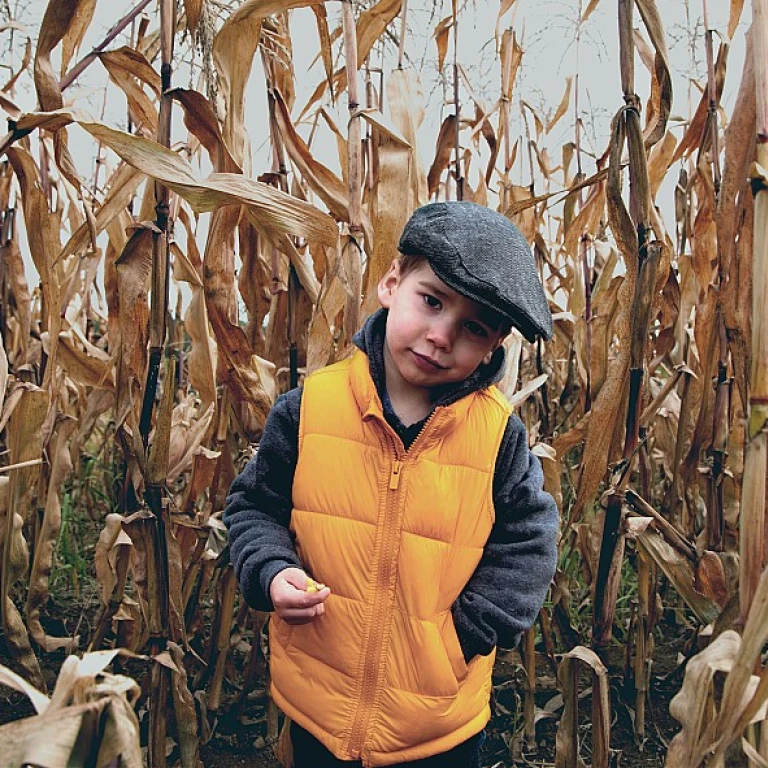
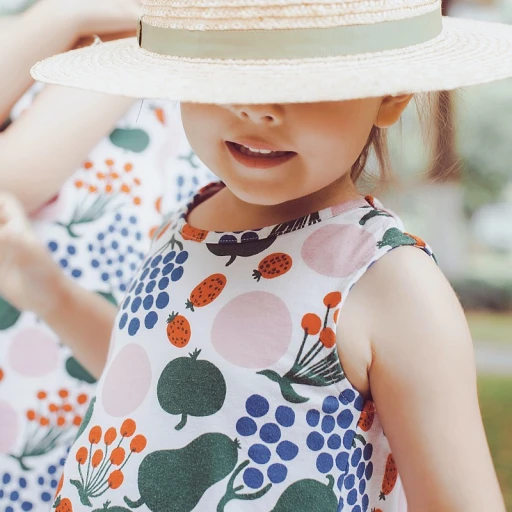
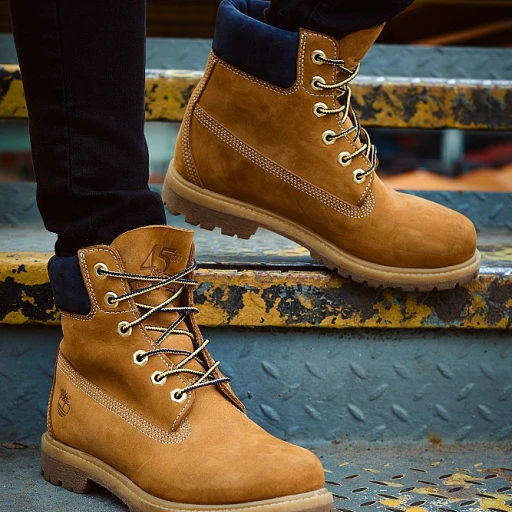
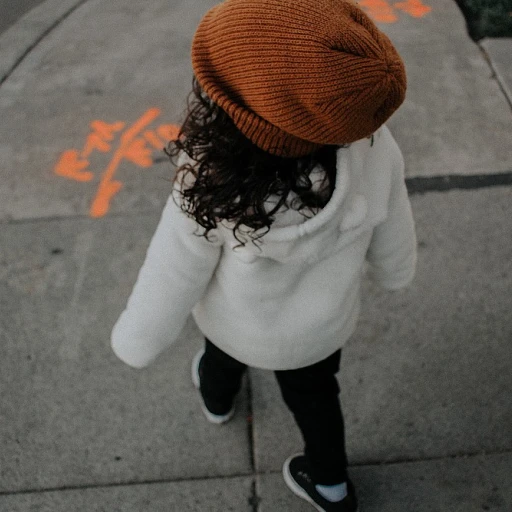

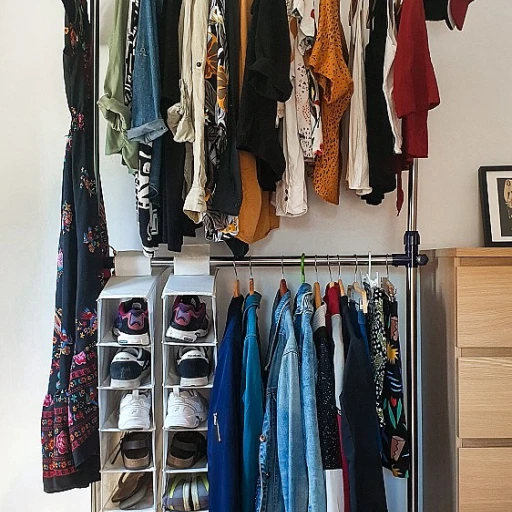
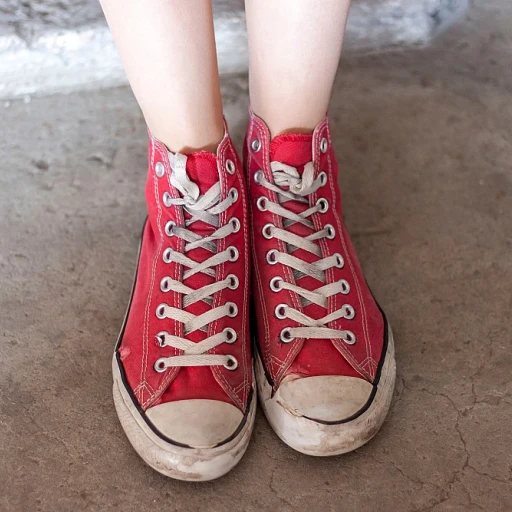
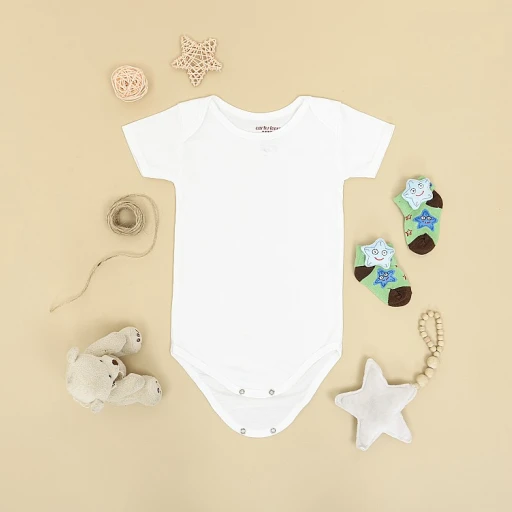
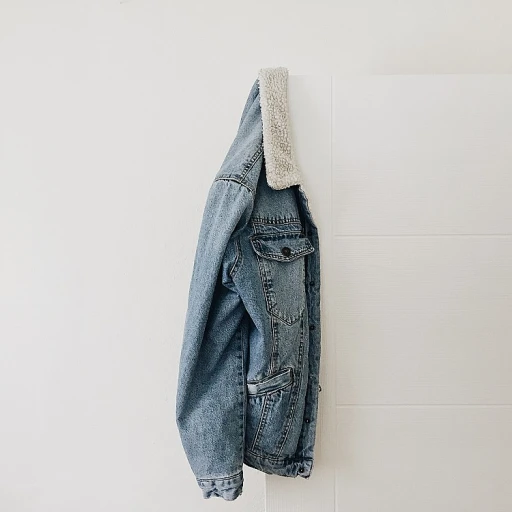
-large-teaser.webp)
